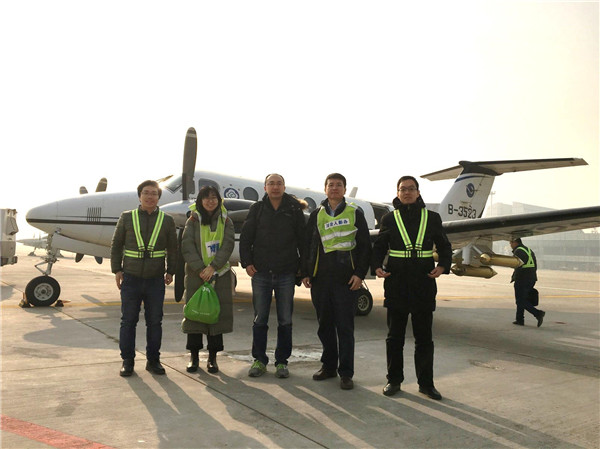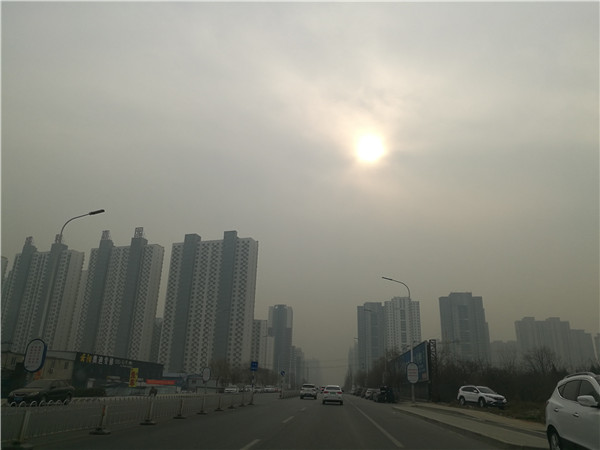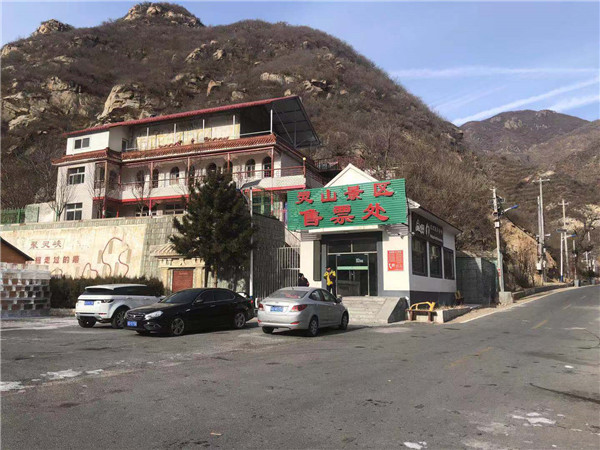State Key Laboratory of Numerical Modeling for Atmospheric Sciences and
Geophysical Fluid Dynamics (LASG)
Institute of Atmospheric Physics, Chinese Academy of Sciences

Vol.9/No9.April 2019
Tracking the Intensified Observation of CO2-2019 Winter
On January 7, 2019, the National Key Research and Development Program "High Spatial and Temporal Resolution Carbon Emission Monitoring and Application Demonstration of Beijing-Tianjin-Hebei Urban Agglomeration" (2017YFB0504000), led by the Institute of Atmospheric Physics of the Chinese Academy of Sciences, launched "Tracking CO2 - Enhanced Observation in Winter".
This observational activity comprehensively monitored atmospheric CO2 concentration in Beijing, Tianjin and Hebei, which synthesized various observation methods, including carbon monitoring satellite, aircraft, ground mobile vehicle and so on. The observation expected to provides data and technical support for the study of carbon emissions in urban agglomerations.

Aircraft observation
Ground mobile vehicle observation
Ground mobile vehicle observation started from Beijing in five routes, which reached Tianjin, Shijiazhuang, Baoding (Xiong’an), Zhangjiakou and Lingshan areas respectively, to monitor the route and target areas. The miniaturized CO2 observation instrument independently developed in this project is a "secret weapon" for monitoring carbon emissions on the ground. After more than one year of continuous improvement, the quality of hardware and software of the instrument had been greatly improved. During the intensive observation activity, the miniaturized CO2 observation instrument was fixed on the roof of the mobile car. The observer kept the GPS software in mobile phone on all along to record the routes. The CO2 concentration distribution characteristics of each route can finally be obtained. By integrating the observed data with corresponding models, scientists will obtain the regional carbon source and sink information.
The scheme would help scientists to obtain comprehensive concentration data in the observation region, and establish a real-time carbon dioxide concentration monitoring system to better identify emissions sources and develop measures to reduction and anti-smog. The system would also provide a guide for climate change research and emission reduction policy making.
Related report in Global Times reports:
http://www.globaltimes.cn/content/1135074.shtml

Observations in Beijing
Observations in Tianjin
Observations in Shijiazhuang
Observations in Baoding
Observations in Baiyangdian, Xiongan New Area
Observations on the way to Zhangjiakou

Observations in Lingshan(Beijing)
E-mail: lasg_newsletter@lasg.iap.ac.cn
Editors: Chuanyi Wang (wangcy@lasg.iap.ac.cn), Kangjun Chen(ckj@lasg.iap.ac.cn)